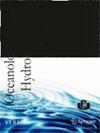How do mussel provenance and spat size affect mussel aquaculture performance in the South-Western Mediterranean (Algeria)?
IF 1
4区 环境科学与生态学
Q4 OCEANOGRAPHY
引用次数: 0
Abstract
Abstract The objective of this research was to study the effects of size and spat origin of farmed Mytilus galloprovinciallis in mussel longlines in the east of Bou-Ismail Bay (central coastal Algeria, south-western Mediterranean). The study was conducted from October 2017 to July 2020 in the east of Bou-Ismail Bay. The mussel spat were obtained from four origin sites (Tlemcen, Tenes, Ain Tagourait and the study site) and were seeded on three spat sizes (10–30, 30–60 and >60 mm). The production performance of this species was analysed on 284 random mussel plots using average physical product (APP), gain and loss rates, condition index (CI), percentage of edibility (PE) and shell thickness index (STI). Apart from the CI and loss rate, the performance indicators showed significant differences according to spat size and source (p < 0.05). Overall, the highest APP (4.3) was recorded for the small seeded mussels (10–30) mm and for those originating from Tlemcen, near finfish cages (APP = 4.14). These individuals exhibited more efficient growth and physiology for commercial size and performed better than the spat collected at the study site. The results can be considered a valid contribution to best farming practice for optimising the production of this species in Algeria. It also contributes to the development of integrated multitrophic aquaculture (IMTA) methodology, which is suitable for use in the oligotrophic Western Mediterranean.地中海西南部(阿尔及利亚)的贻贝来源和吐口大小如何影响贻贝养殖性能?
摘要本研究的目的是研究Bou Ismail湾东部(阿尔及利亚中部沿海,地中海西南部)贻贝延绳钓中养殖的加洛氏Mytilus galloprovinciallis的大小和吐口水来源的影响。该研究于2017年10月至2020年7月在Bou Ismail湾东部进行。贻贝的唾沫从四个来源地(Tlemcen、Tenes、Ain Tagourait和研究地点)获得,并以三种唾沫大小(10–30、30–60和>60 mm)播种。利用平均物理产品(APP)、增益和损失率、条件指数(CI)、可食性百分比(PE)和外壳厚度指数(STI),在284个随机贻贝小区上分析了该物种的生产性能。除了CI和损失率外,性能指标根据吐口大小和来源显示出显著差异(p<0.05)。总体而言,小籽贻贝(10-30)mm和源自特列姆森的贻贝的APP最高(4.3),近鳍鱼笼(APP=4.14)。这些个体在商业规模下表现出更有效的生长和生理机能,表现比在研究地点收集的唾沫更好。这些结果可以被认为是对阿尔及利亚优化该物种生产的最佳农业实践的有效贡献。它也有助于开发综合多营养水产养殖(IMTA)方法,该方法适用于贫营养的西地中海。
本文章由计算机程序翻译,如有差异,请以英文原文为准。
求助全文
约1分钟内获得全文
求助全文
来源期刊
CiteScore
1.70
自引率
11.10%
发文量
8
审稿时长
>12 weeks
期刊介绍:
Oceanological and Hydrobiological Studies is an international journal published by the Institute of Oceanography, University of Gdańsk in Poland. The journal has 4 issues per year and contains papers on all aspects of the marine environment and hydrobiology. All manuscripts are reviewed by editors and independent experts. Based on the referees'' recommendations, the Editor will make a decision on whether to accept a contribution. All articles are published in English. The journal is open to all matters concerning the water environment, thus providing the readers with a wide spectrum of topics in every issue.

 求助内容:
求助内容: 应助结果提醒方式:
应助结果提醒方式:


